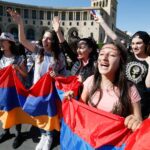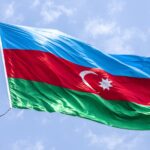How It All Began
The history of cooperation between Azerbaijan and the OSCE began on January 30, 1992, when the decision to admit Azerbaijan into the organization was made at the second meeting of foreign ministers in Prague. This date marks the beginning of formal relations between Azerbaijan and the OSCE. In March of the same year, less than three months after the collapse of the Soviet Union and amid the escalation of the First Karabakh War, the organization, then known as the Conference on Security and Cooperation in Europe (CSCE), took up the role of mediator in the conflict. As the CSCE evolved into the OSCE, its mediation in the Armenian-Azerbaijani conflict became institutionalized through a series of instruments: the Personal Representative of the Chairman-in-Office (PRCiO), the High-Level Planning Group (HLPG), and the Co-Chairs of the Minsk Conference, the proposed venue for negotiations.
This was a unique historical moment when the Iron Curtain had fallen, and it seemed that mutual understanding and cooperation among the CSCE participating states prevailed over confrontation. In this spirit of trust and shared values, the CSCE attempted to transform into the Organization for Security and Cooperation in Europe (OSCE) to address issues of common interest. The first decision regarding the Nagorno-Karabakh conflict was made on March 24, 1992, when the CSCE Council of Ministers decided to convene a conference in Minsk as a permanent forum for negotiations.
The organization undertook the resolution of the conflict between Armenia and Azerbaijan, whose roots go back to the 19th century, to the resettlement policies of Tsarist Russia and the creation of the Nagorno-Karabakh Autonomous Region (NKAO) with a predominantly Armenian population within Soviet Azerbaijan in the early 1920s. After the dissolution of the USSR in 1991, Azerbaijan declared independence, including the territory of Nagorno-Karabakh, and was recognized by the international community. However, the young state faced serious challenges: a million refugees and constant military attacks from Armenia and the separatist forces of Nagorno-Karabakh. A bloody war began.
The Reign of Heydar Aliyev (1993-2003)
Two years later, at the OSCE summit in Budapest in December 1994, a decision was made to begin discussing a security concept for the 21st century. This included the establishment of the conference co-chairmanship to consolidate mediation efforts. The participants of the conference expressed their readiness to provide peacekeeping forces after the signing of a political agreement.
In 1994, the CSCE faced two tasks: mediating and supporting the peaceful resolution of the conflict and defining the role of the CSCE and the Minsk Process. Russia played a dual role, being a member of the Minsk Group and a regional actor. Its national interests in the near abroad did not always align with the interests of other Minsk Group members. Russia conducted separate negotiations, which resulted in a ceasefire agreement between Armenia and Azerbaijan in May 1994.
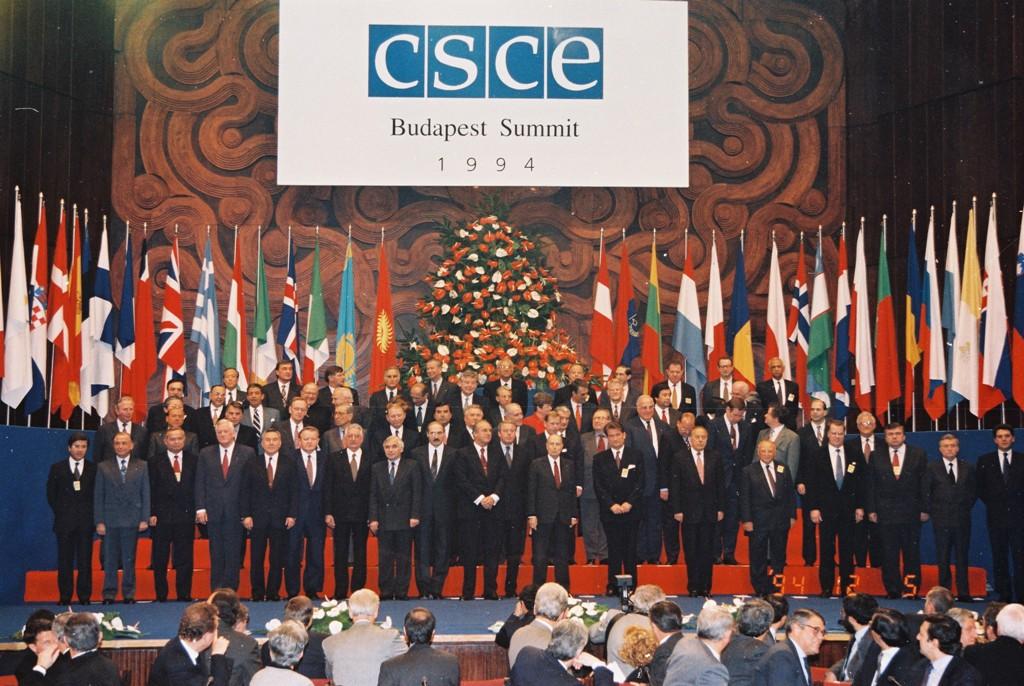
However, two years later, at the OSCE summit in Lisbon in December 1996, Armenia rejected the principles for resolving the conflict proposed by the co-chairs of the Minsk Conference, including the territorial integrity of Armenia and Azerbaijan and a high level of self-governance for Nagorno-Karabakh. Meanwhile, between these events in 1995, a joint OSCE/UN mission was organized to observe the parliamentary elections (Milli Majlis) in Azerbaijan.
In 1997, a significant event occurred, establishing the well-known troika of co-chairmanship in the Minsk Group – Russia, France, and the United States. This led to an active phase of diplomacy, although the co-chairs acted more as representatives of their states rather than as individual mediators.
The United States, starting from 1994, developed interests in the region linked to the presence of oil in the Caspian basin and the desire to diversify oil sources. Meanwhile, Russia continued to supply modern weapons to Armenia, casting doubt on its neutrality. As for how France became a co-chair, Azerbaijani President Ilham Aliyev recounted this during a meeting with a group of Azerbaijani journalists on January 10, 2024: “President Jacques Chirac of France persuaded my father for a long time to agree to France’s co-chairmanship, and he refused. Later, during my meetings with President Chirac, he repeatedly reminded me how he had persuaded him (Heydar Aliyev) and how he had promised that France would remain neutral, and how he kept that promise even when my father was no longer alive, right in front of me. I always viewed this positively. Outwardly, everything seemed to be balanced. Although I do not know what was happening behind the scenes, outwardly the balance was maintained until recently.”
Back to 1997. In June, a comprehensive agreement proposal was presented, containing elements concerning the status of Nagorno-Karabakh. Specifically, the Minsk Group proposed three main settlement plans for the conflict. The first proposal, known as the “package agreement,” was presented in July 1997. It called for a simultaneous resolution of all aspects of the conflict, including the status of Nagorno-Karabakh. The second proposal, the “step-by-step agreement,” was presented in September 1997 and involved a two-stage conflict resolution. In the first stage, the parties would cease hostilities and normalize relations, and in the second stage, they would continue negotiations on the status of Nagorno-Karabakh. The third proposal, known as the “common state peace plan,” was presented in November 1998 and called for the creation of a common state between Azerbaijan and Nagorno-Karabakh with a special status for the latter.
Despite numerous meetings and efforts by the Minsk Group, none of the proposals were accepted by the conflicting parties. The principle of territorial integrity, enshrined in the Helsinki Act of 1975, cast doubt on the possibility of OSCE neutrality. The main reasons for the failures lay in the disagreements over the territorial integrity of Azerbaijan and the right to self-determination for the Armenians of Nagorno-Karabakh, mutual distrust of the proposed solutions and each other, as well as political pressure and internal conflicts within Armenia and Nagorno-Karabakh. These factors led to the resignation of Armenian President Levon Ter-Petrosyan in 1998 after his public call for concessions to Azerbaijan. That same year, presidential elections were held in Azerbaijan, with an OSCE/ODIHR mission present as observers.
A year later, on November 16, 1999, the OSCE Permanent Council adopted Resolution No. 318, which eventually led to the opening of the OSCE Office in Baku.
At the Istanbul Summit held on November 18, 1999, in Istanbul, the Heads of State or Government of the OSCE adopted three important documents: the Charter for European Security, the Agreement on Adaptation of the Treaty on Conventional Armed Forces in Europe, and the Istanbul Summit Declaration.
The Charter for European Security aims to strengthen the Organization’s ability to prevent conflicts, resolve them, and rehabilitate societies ravaged by war and conflicts. The participating states committed to developing the OSCE’s role in peacekeeping operations, creating Rapid Expert Assistance and Cooperation Teams, and expanding OSCE policing activities. They agreed to enhance cooperation with other international organizations through a new instrument called the Platform for Cooperative Security.
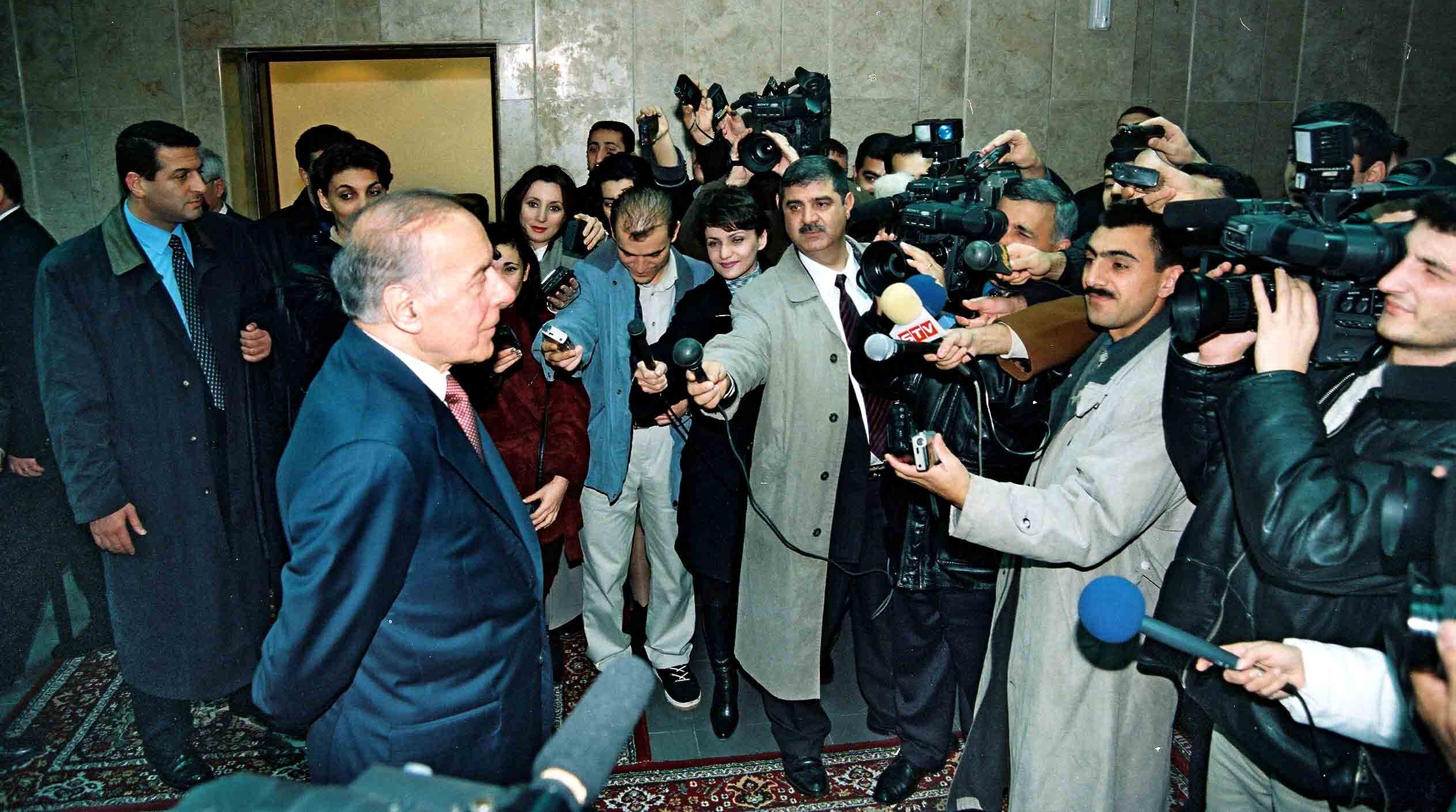
On November 25, 1999, a Memorandum of Understanding was signed with Azerbaijan, providing for close cooperation with the OSCE in implementing democratic reforms, human rights, civil society development, promoting freedom of thought and expression, combating gender inequality and violence against women, conducting seminars, and interacting with the OSCE Representative on Freedom of the Media. The memorandum also provided for technical assistance in the field of elections and support in developing a population registration system. Seminars held between 1996 and 1999 also covered issues of combating organized crime and the role of the judiciary. This Memorandum of Understanding marked the beginning of official cooperation between the OSCE and Azerbaijan. The OSCE Office in Baku officially opened on July 18, 2000.
Meanwhile, Azerbaijan continued to actively participate in discussions on the Nagorno-Karabakh conflict, presenting a total of 24 official documents between 1995 and 1999. In its statements, Azerbaijan persistently emphasized the need to create procedures for upholding OSCE principles and decisions, strengthening the OSCE’s operational capabilities in conflict resolution, the importance of the Helsinki principles, and cooperation among international organizations.
The period between 1997 and 2007 is considered a decade of significant activity for the OSCE Minsk Group. Through its mediation, the parties seriously discussed several successive proposals, covering a spectrum of possible conflict resolutions, from solutions based on maintaining territorial integrity to territorial exchanges. However, none of these proved viable.
In January 2001, negotiations took place in Paris between Robert Kocharyan and Heydar Aliyev, with the participation of French President Jacques Chirac. After the meeting, a scandal erupted when Armenian Foreign Minister Vardan Oskanian denied Azerbaijani counterpart Vilayat Guliyev’s claim of an oral agreement between the presidents on resolving the Karabakh conflict. In February of that year, Azerbaijani media published confidential proposals from the OSCE Minsk Group co-chairs, prompting President Heydar Aliyev of Azerbaijan to state that adopting the “common state” model would lead to the loss of sovereignty over Nagorno-Karabakh. U.S. President George Bush sent a letter to Heydar Aliyev, calling the meetings between the leaders of Armenia and Azerbaijan a step forward towards conflict resolution.
In March 2001, the second round of negotiations between Kocharyan and Aliyev took place in Paris with Jacques Chirac’s participation. Aliyev described this meeting as unsuccessful, expressing hope for positive U.S. influence on the negotiations. Kocharyan, in turn, stated that the “one-on-one” meeting format had exhausted itself and handed over the initiative to the OSCE Minsk Group co-chairs.
In April, negotiations began in Key West, USA, between the presidents of Armenia and Azerbaijan with the participation of the OSCE Minsk Group co-chairs. At the start of the meeting, U.S. Secretary of State Colin Powell noted that the negotiations would be challenging. However, meetings between U.S. President George Bush and the presidents of Armenia and Azerbaijan reportedly took place in a warm atmosphere.
In November 2001, the OSCE Minsk Group co-chairs visited the region again. First Deputy Foreign Minister of Russia Vyacheslav Trubnikov stated that the co-chairs had not proposed anything radically new, discussing the same schemes already known to the presidents.
In February 2002, the mediators met with the presidents of Azerbaijan and Armenia in New York and Vienna. Heydar Aliyev reported new proposals, while Armenian Foreign Minister Vardan Oskanian noted that no radically new ideas had been presented to the Armenian side.
In March, U.S. mediator Rudolf Perina stated at a meeting with Aliyev in Baku that it was time to resolve the Karabakh problem. Russian mediator Vyacheslav Trubnikov emphasized that the mediators had no new revolutionary proposals. Azerbaijani Foreign Minister Vilayat Guliyev accused the OSCE Minsk Group of ignoring Armenia’s aggressive policy. U.S. Ambassador to the OSCE Stephan Minikes urged Armenia and Azerbaijan to complete the work that had been started.
In October 2003, Russian co-chair of the OSCE Minsk Group Yuri Merzlyakov stated that the foundations of the negotiations were based on agreements reached at the last meeting between the presidents of Armenia and Azerbaijan.
The Presidency of Ilham Aliyev
In December 2003, President Ilham Aliyev met for the first time after his election with Armenian President Robert Kocharyan in Geneva. Russian First Deputy Foreign Minister Vyacheslav Trubnikov noted that the Kocharyan-Aliyev meeting in Geneva was significant but did not resolve all issues. Ilham Aliyev stated that the OSCE Minsk Group should come up with new proposals, while Vardan Oskanian claimed that Aliyev was aware of his weakness in resolving the conflict.
In February 2004, Russian co-chair of the OSCE Minsk Group Yuri Merzlyakov stated that the negotiations had reached a deadlock as neither side was ready to make concessions. Azerbaijani Foreign Minister Vilayat Guliyev asserted that Baku had the right to start negotiations from scratch, to which the Armenian Foreign Ministry responded that “if Azerbaijan wants to start from scratch, it should address Stepanakert.”
In March 2004, President Ilham Aliyev criticized the Minsk Group, stating that “the OSCE Minsk Group has not taken positive steps in 12 years.”
In 2005, the OSCE decided to conduct a Fact-Finding Mission (FFM) to assess the presence of settlements in the occupied territories of Nagorno-Karabakh. The mission included ten experts from various EU countries and specialists from the OSCE Secretariat.
On January 28, the experts arrived in Baku, where they received information from Azerbaijani authorities. They then traveled to Vienna and Yerevan for further briefings. On January 30, the mission arrived in Hankendi and met with local separatists, obtaining additional materials from them.
Starting January 31, the mission visited the Kelbajar, Fizuli, Jabrayil, Agdam, Zangilan, and Gubadly districts. They found approximately 1,500 settlers in Kelbajar, around ten in Fizuli, and almost none in Jabrayil. Agdam was completely destroyed. A small number of residents lived in Zangilan and Gubadly. On February 4, the mission visited Lachin, discovering about 3,000 people there and another 5,000-8,000 in surrounding villages. The mission noted a more developed infrastructure in this area.
The mission concluded that the population of the occupied areas was small and primarily engaged in agriculture, scrap metal collection, and construction materials gathering.
In 2005, the parties were presented with a fourth, “mixed” plan, which proposed preliminary agreement on the main principles of the settlement. In 2006, the Minsk Group co-chairs disclosed part of the proposals, including the phased withdrawal of Armenian forces, the demilitarization of the territories, the creation of a corridor between Nagorno-Karabakh and Armenia, a referendum on the status of Nagorno-Karabakh, the introduction of peacekeepers, and international assistance.
In November 2007 in Madrid, the OSCE Minsk Group presented a set of basic principles for conflict resolution to the parties involved. This document would later become known as the “Madrid Principles.” Exactly one year later, in November 2008, the Maiendorf Declaration was signed, reaffirming the importance of the Minsk Group’s mediation efforts. Azerbaijan again proposed granting Nagorno-Karabakh a high degree of autonomy within its territory, but the parties could not reach an agreement.
On July 10, 2009, in a statement from the heads of state of the OSCE Minsk Group co-chairs in L’Aquila, Italy, an updated version of these principles was announced. The updated principles included the return of territories surrounding Nagorno-Karabakh to Azerbaijani control, a temporary status for Nagorno-Karabakh, a corridor between Armenia and Nagorno-Karabakh, the determination of Nagorno-Karabakh’s final status, the return of displaced persons, and international security guarantees.
These principles were reiterated on June 26, 2010, in Muskoka in a joint statement by the presidents of Russia, the United States, and France. The statement emphasized that conflict resolution should be based on the principles of the Helsinki Final Act. That same year, at the OSCE summit in Astana on December 1, a joint statement reaffirmed the parties’ commitment to resolving the conflict based on international law and previous statements. However, expectations for progress in conflict resolution were once again unmet.
From 2014 onwards, the modest architecture of the OSCE’s ceasefire monitoring struggled to cope with increasing instability and escalations along the line of contact. The Azerbaijani delegation continued active participation in the work of the OSCE Parliamentary Assembly. In 2014, Baku hosted the Assembly’s annual session.
In 2015, Presidents Ilham Aliyev of Azerbaijan and Serzh Sargsyan of Armenia held a meeting in Bern, Switzerland, under the auspices of the Minsk Group co-chairs. The parties reaffirmed their commitment to continue negotiations and reduce the risk of violence.
Despite these efforts, attempts to modernize the mandate of the Personal Representative of the OSCE Chairperson-in-Office (PRCiO) met resistance or only received formal agreement. This was evident after the “Four-Day War” in April 2016, which clearly demonstrated the need for such reforms. Decision-making by consensus allowed the 57 OSCE participating states, including Armenia and Azerbaijan, to use their veto power. This led to the OSCE losing its last permanent presence on the ground when its office in Yerevan was closed in 2017 following Azerbaijan’s objections to its support for demining activities in Armenia. The OSCE mission in Azerbaijan was downgraded in 2014 and closed in 2016.
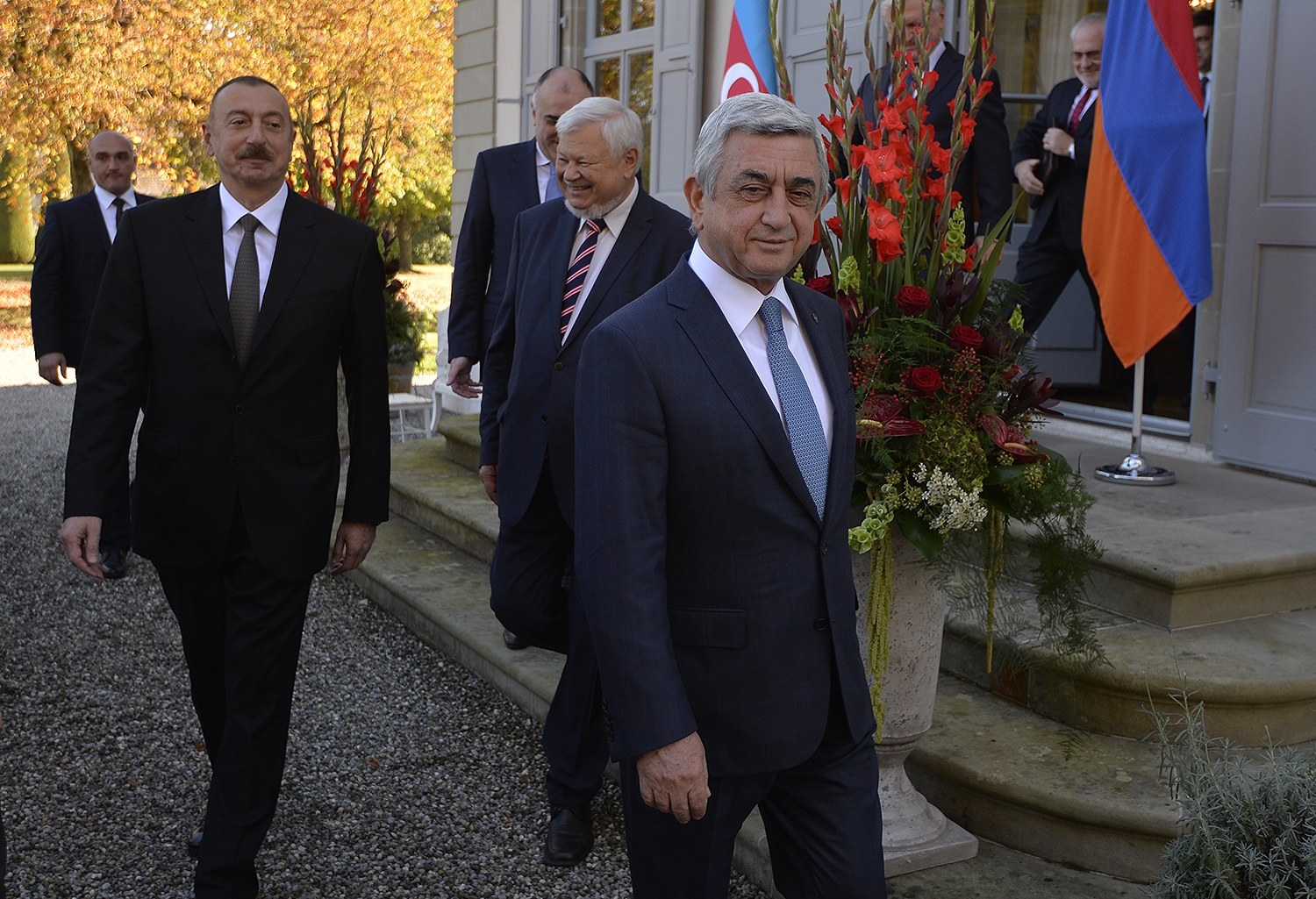
In October 2017, another meeting took place in Geneva, where the presidents agreed on measures to strengthen the negotiation process and reduce tensions along the line of contact. In September 2018, OSCE Secretary General Thomas Greminger also visited Azerbaijan, meeting with the president and other high-ranking officials to discuss various aspects of cooperation. That same year, ODIHR observed early presidential elections in Azerbaijan.
In 2020, as tensions between Armenia and Azerbaijan escalated, various objections raised within the OSCE by Azerbaijan, Tajikistan, and Turkey contributed to a prolonged leadership crisis, further weakening the organization.
The 2020 War and Its Impact on Future Relations
In the history of the 20th and 21st centuries, there are only a few examples of successful reclamation of territories lost during conflicts. One such exception is the Sinai Peninsula, which Egypt regained following Anwar Sadat’s historic visit to Israel in 1977. However, in the Armenian-Azerbaijani conflict, Azerbaijan was unable to liberate its occupied territories peacefully, ultimately resorting to war, which began on September 27, 2020, and resulted in the liberation of these lands at the cost of 3,000 Azerbaijani soldiers’ lives. The question of what measures international organizations took to resolve the conflict and prevent humanitarian disasters remains open.
After the 44-day war, the Azerbaijani government’s stance on the OSCE Minsk Group changed. On December 12, 2020, Azerbaijani President Ilham Aliyev met with OSCE Minsk Group co-chairs Stéphane Visconti from France and Andrew Schofer from the USA, as well as the Russian Ambassador to Azerbaijan Mikhail Bocharnikov and the Personal Representative of the OSCE Chairperson-in-Office Andrzej Kasprzyk, at the group’s request. During this meeting, Aliyev sharply criticized the Minsk Group, emphasizing its ineffectiveness in resolving the conflict between Armenia and Azerbaijan.
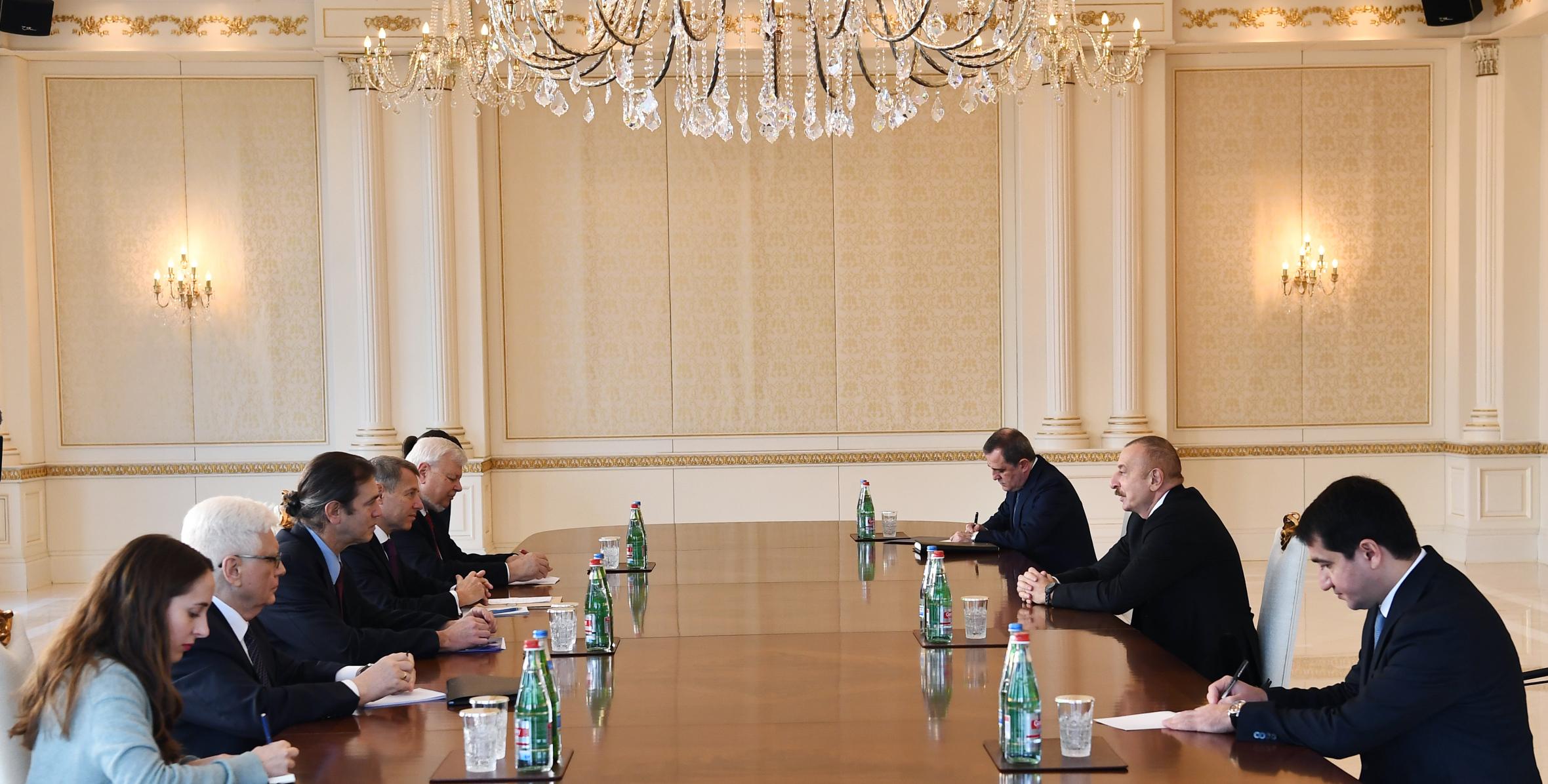
Aliyev began his speech by stating that despite a 28-year mandate, the Minsk Group had failed to achieve significant results in resolving the conflict. He noted that Azerbaijan had independently resolved the issue using military and political means. Aliyev also emphasized that the Minsk Group did not play a significant role in this process, despite attempting to contribute ideas and propose creative solutions. He highlighted that Azerbaijan had liberated its territories and restored control over them, as confirmed by the declaration signed on November 10, 2020.
In response, Stéphane Visconti acknowledged the complexity of the Minsk Group’s mandate and noted that France welcomed the ceasefire and was ready to support a new order aimed at stabilizing the region. Andrew Schofer expressed gratitude for the reception and emphasized that the new reality required a revision of approaches. He proposed discussing how the Minsk Group could contribute to further peaceful development in the region. Mikhail Bocharnikov stressed the importance of implementing the provisions of the trilateral declaration and noted that Russia continued to support the Minsk Group’s activities, expressing readiness to assist in the reconstruction and peaceful development of the region.
In subsequent years, Ilham Aliyev repeatedly returned to criticizing the OSCE Minsk Group. For instance, in a January 2022 interview, Aliyev mentioned that the Minsk Group co-chairs were “on the brink of retirement” and wished them health and long life. It was also evident that the geopolitical confrontation between Russia and the West led to stagnation in the format’s work, where Russia, the USA, and France were required to work together. In April 2022, Sergey Lavrov noted that the USA and France had refused to cooperate with Russia within the Minsk Group framework.
It is worth noting that Azerbaijan’s rejection of the Minsk Group’s mediation services did not significantly affect its overall relationship with the OSCE. For example, fruitful cooperation continues with the OSCE Representative on Freedom of the Media. This position has been held by Teresa Ribeiro from Portugal since 2020. As part of this cooperation, training sessions for Azerbaijani journalists are conducted, and the country’s media legislation is being improved.
Particular importance is attached to interaction with the OSCE High Commissioner on National Minorities, a position held by Kairat Abdrakhmanov from Kazakhstan since 2020. Azerbaijan actively collaborates in protecting the rights of national minorities, integrating them into public life, and exchanging best practices.
In March 2021, the OSCE Chairperson and Swedish Foreign Minister Ann Linde visited Azerbaijan to discuss post-conflict recovery and strengthen practical cooperation.
On January 19, 2022, Azerbaijani Foreign Minister Jeyhun Bayramov presented Azerbaijan’s priorities as the chair of the OSCE Forum for Security Co-operation (FSC) at the opening session in Vienna. Bayramov emphasized that unconditional respect for the core norms, principles, and commitments enshrined in key OSCE documents, starting with the Helsinki Final Act, especially respect for sovereignty, territorial integrity, and the inviolability of internationally recognized borders, remains the foundation for cooperation within the OSCE and the FSC in particular. Azerbaijan remains steadfast in its support of these principles and considers their adherence a paramount task.
Pointing to the connection between adherence to fundamental OSCE principles and military-political commitments, Bayramov noted that fulfilling these commitments in good faith could significantly contribute to peace, security, and stability in the OSCE region, provided there is unconditional respect for the aforementioned principles and commitments. Such an approach by participants could restore trust and confidence, strengthen the application of military-political tools, increase predictability and transparency, avoid numerous threats, and enhance stability in the OSCE region.
Azerbaijan’s chairmanship program at the FSC covered important and timely topics such as compliance with international humanitarian law and the protection of civilians, humanitarian demining, control of small arms and conventional ammunition, the role of non-aligned countries in the European security system, combating terrorism, UN Security Council Resolution 1325 on women, peace, and security, arms control measures and confidence-building, as well as post-war rehabilitation and peacebuilding.
In his speech, Bayramov also addressed the role of non-aligned countries, including Azerbaijan, in the European security system, emphasizing that Azerbaijan has always regarded the OSCE as a crucial pillar of pan-European security and valued its role in realizing the vision of a Europe without dividing lines and spheres of influence.
On May 14, 2024, Azerbaijani President Ilham Aliyev once again called for the dissolution of the OSCE Minsk Group, stating that the issue for which the group was created has already been resolved. During a meeting with OSCE Chairman Jan Borg in Baku, Aliyev advocated for the elimination of other mechanisms he termed “relics of the past,” such as the High-Level Planning Group and the Office of the Personal Representative of the OSCE Chairperson-in-Office, which the Azerbaijani leader described as “absolutely inactive.”
Aliyev stressed that the OSCE budget could be better utilized for more significant projects and reiterated that the Karabakh conflict has been resolved, with Azerbaijan having restored its sovereignty and territorial integrity.
In Conclusion
Today, few international institutions are as closely associated with the post-Cold War era as the Minsk Group, which emerged at the intersection of two processes: the first Armenian-Azerbaijani war and the institutionalization of a new regional security system following the collapse of the Soviet Union.
The Minsk Group has been repeatedly criticized for its ineffectiveness in its mediation efforts. Even the co-chairs of the group, such as Richard Hoagland (USA), have admitted to how “little was achieved” and have suggested revisiting its mandate. Similarly, Carey Cavanaugh, a former US co-chair, described the group’s structure as “structurally flawed” and proposed the United Nations as a better platform for peacekeeping.
Since the 1990s, Azerbaijan has consistently expressed doubts about the impartiality of the Minsk Group and its co-chairs—Russia, the USA, and France. The main grievances centered around accusations that the Minsk Group sought to maintain regional stability to protect the national interests of the co-chairing countries rather than genuinely resolving the conflict. Azerbaijan also perceived the significant influence of the Armenian diaspora in the co-chairing countries as leading to a pro-Armenian stance. Russia, as Armenia’s main political and military ally, not only supported the Armenian side during the conflict but also participated directly in the military actions.

The Karabakh conflict highlighted the complexity and multilayered nature of international efforts to resolve protracted territorial disputes. There were certainly internal factors within both countries that contributed to the failures in the conflict resolution process. However, the Minsk Group, operating within the OSCE framework, found itself constrained by a consensus-based decision-making process that slowed its work and prevented rapid adaptation to new realities. This consensus principle, reflecting the expectations of the 1990s, created additional challenges. The OSCE was only as strong and effective as its participating states desired, and the group’s work often depended on the political will of individual countries. One of the main obstacles was the limited mandate, which prevented the group from effectively balancing the principles of self-determination and territorial integrity. The group was also criticized for its closed approach. Summits were held in distant capitals with minimal involvement from representatives of the conflicting sides, distancing the peace process from those most invested in its success.
In an era of growing multipolarity, the Minsk Group has become a relic of the unipolar world of the late 20th century. The cooperation among great powers within the group turned out to be illusory. Against the backdrop of changing geopolitical realities and new challenges facing the international community, there is a need to reassess approaches to peacekeeping and adopt more flexible, inclusive conflict resolution mechanisms capable of adequately responding to contemporary challenges and ensuring sustainable peace.


